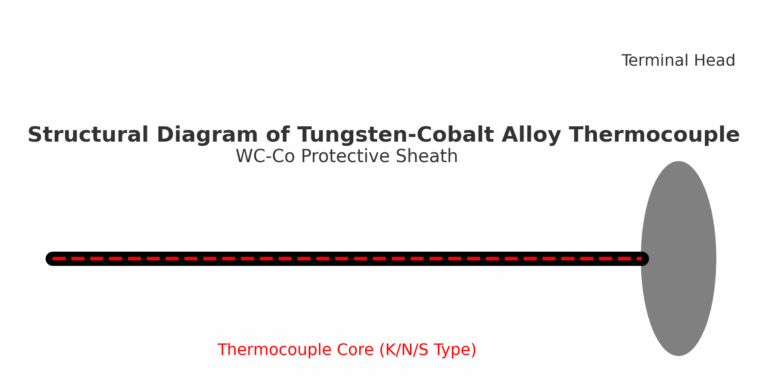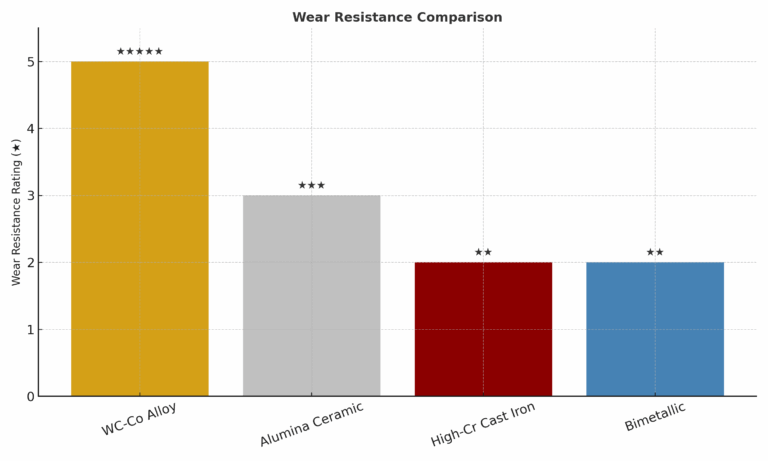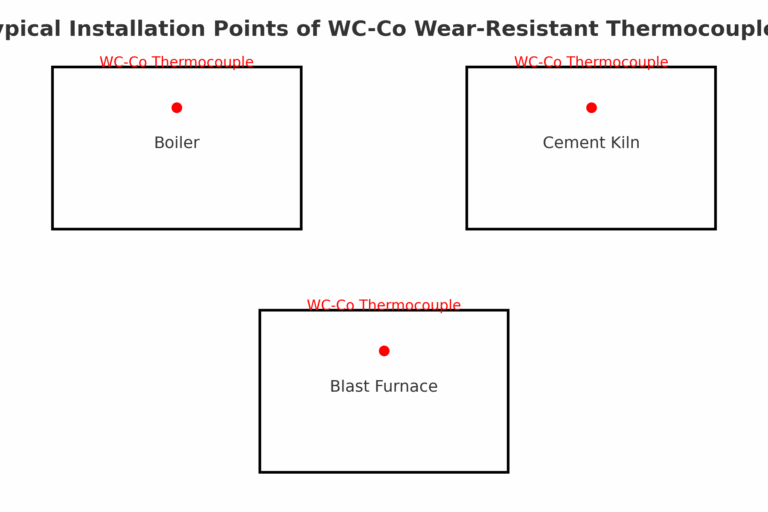1. Overview
Brief introduction to tungsten-cobalt alloy (WC-Co) wear-resistant thermocouples, their typical applications, and why they are compared with ceramic, high-chromium cast iron, and bimetallic types.

2. Key Advantages
2.1 Superior Wear Resistance – Ideal for High-Hardness Particle Environments
WC-Co hardness: HRC 65–90 (depending on cobalt content)
3–5 times the wear resistance of alumina ceramics (HRC 50–60)
Wear rate in high-speed particle flow (e.g., coal powder pipelines) is only 1/5–1/10 of high-chromium cast iron.
2.2 Excellent High-Temperature Stability
Operating temperature range: –200°C to 1400°C (depending on thermocouple type: K, N, S, etc.)
Maintains hardness and structural integrity at high temperatures
Superior to high-chromium cast iron (loses hardness above 800°C) and bimetallic types (limit ~600°C).
2.3 Better Impact Resistance
Cobalt matrix provides toughness while maintaining hardness
Can withstand medium-intensity impacts without fracture (unlike ceramics)
More durable in vibration and intermittent impact conditions.
2.4 Flexible Formability – Adaptable to Complex Installations
Powder metallurgy allows shapes such as straight rods, elbows, flanged designs, thin probes
Can be combined with various thermocouple cores (K, N, S)
Suitable for narrow pipelines and irregular reactor structures.

3. Comparative Performance Table
| Property | WC-Co Alloy | Alumina Ceramic | High-Chromium Cast Iron | Bimetallic |
|---|---|---|---|---|
| Hardness (HRC) | 65–90 | 50–60 | 55–65 | 50–60 |
| Wear Resistance | ★★★★★ | ★★★ | ★★ | ★★ |
| Max Temperature (°C) | ~1400 | ~1200 | ~800 | ~600 |
| Impact Resistance | ★★★★ | ★ | ★★★ | ★★★ |
| Formability | High | Low | Medium | Medium |
| Typical Lifespan* | 2–3× ceramic | – | 3–5× cast iron | – |
* Under “high-temperature + high-hardness particles + medium impact” conditions.
4. Typical Application Scenarios
Power plant boilers
Metallurgical blast furnaces
Cement rotary kilns
Fluidized bed reactors
Waste incinerators

5. Limitations & Selection Notes
Higher cost than cast iron or bimetal types
Corrosion resistance weaker than Hastelloy in strongly corrosive gases (e.g., high-chlorine or high-sulfur environments)
Selection should consider temperature, particle hardness, impact strength, and corrosion factors.
